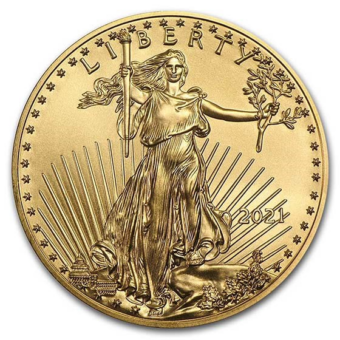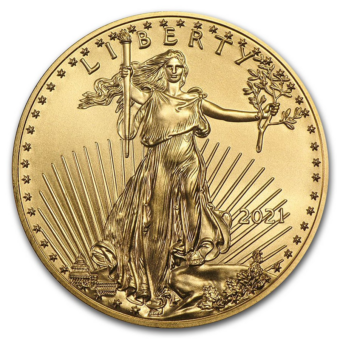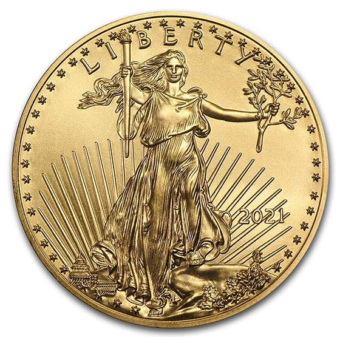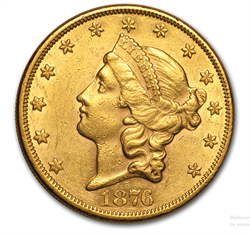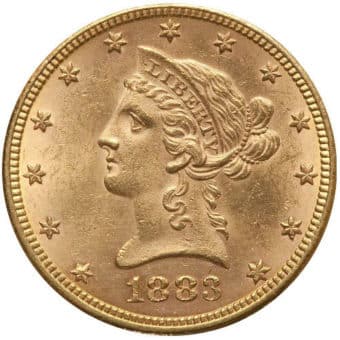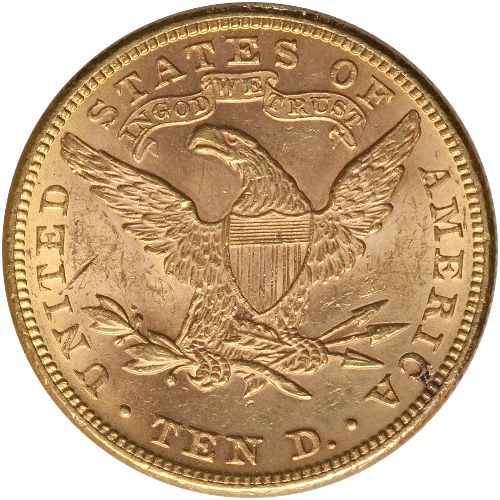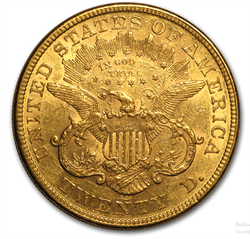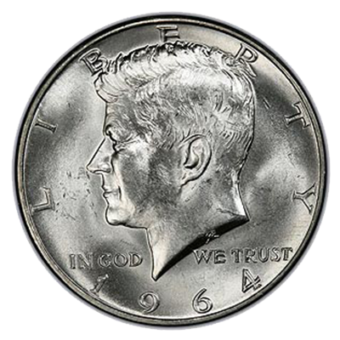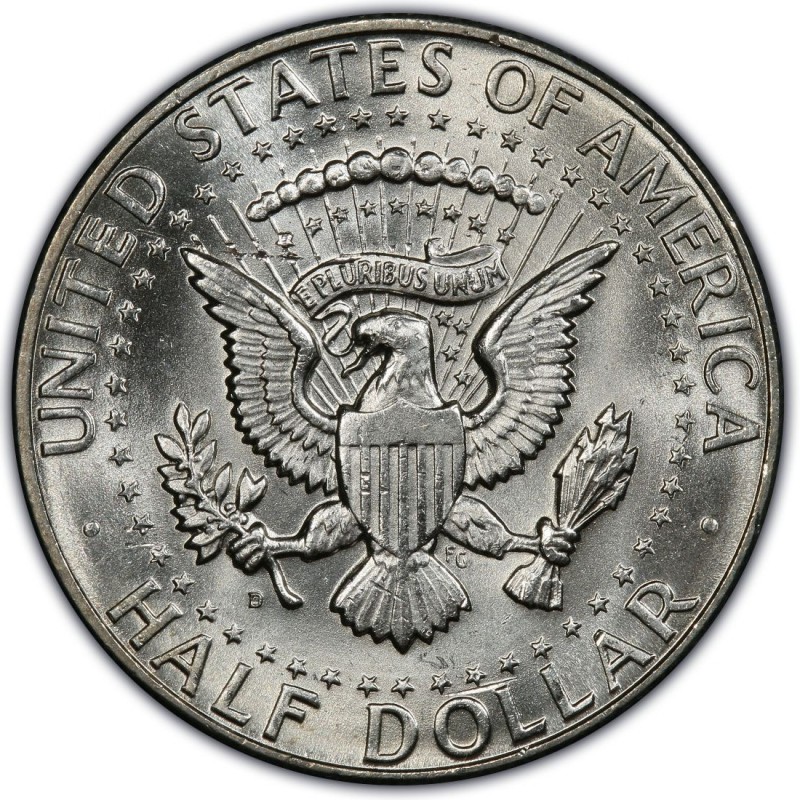The Gold Trail: A Daily Journey Through the Week's Market
Monday - 12.18.23: Gold prices reached a new all-time high, briefly touching $2,135 per ounce at the beginning of the week before retreating slightly. This surge in gold prices was influenced by expectations of potential rate cuts by the Federal Reserve and the October Personal Consumption Expenditures (PCE) report showing subdued inflation. These factors contributed to a shift in investor interest towards gold as an inflation hedge, impacting its market value.
Tuesday - 12.19.23: Gold prices showed resilience, rising above the $2040/oz resistance level in the US session. This was primarily driven by gold's safe haven appeal amid intensifying geopolitical tensions in the Middle East and weakening of the US dollar. Federal Reserve policymakers' dovish stance on potential rate cuts in 2024 further contributed to this trend. However, the day also saw a cautious approach from investors, as upcoming US economic data, especially the US PCE data, was anticipated to influence the market's direction
Wednesday - 12.20.23: Gold prices dipped on Wednesday, December 20th, 2023, falling $2.94 to close at $2,039.67 per ounce. A strengthening dollar, fueled by positive U.S. economic data and hawkish comments from a Fed official, put downward pressure on the precious metal. Despite the decline, silver managed to buck the trend, rising $0.22 to end the day at $24.31. Overall, the gold market remained cautious heading into the holiday season, with investors staying on the sidelines as they awaited further cues from the global economic landscape.
Thursday - 12.21.23: Gold prices staged a strong comeback this morning, defying expectations and rising around 0.7% to $2,042.79 per ounce. The move came on the heels of weaker US Treasury yields and positive economic data that fueled hopes of a potential Fed rate cut next year. This prospect boosted the appeal of gold, a traditional safe-haven asset, driving up its price despite a still-strong dollar. The market remains in flux, with investor sentiment switching towards optimism in anticipation of the holiday season and potential year-end gains. Overall, the gold market holds a more buoyant tone this morning, awaiting further direction from economic cues and central bank decisions.
Friday- 12.22.23: This morning's PCE report offered mixed signals for precious metals, with gold remaining relatively unchanged while silver experienced a modest gain. The inflation reading slightly exceeded expectations, potentially bolstering gold's appeal as a hedge, but rising yields and a strengthening dollar capped its gains. Silver, on the other hand, seemed to benefit from a weaker industrial outlook implied by the report, pushing its price up slightly. Overall, the market's muted response suggests underlying uncertainty and investors holding their breath for further economic data before committing to a clear direction.
Fed's Inflation Gauge Shows Encouraging Trend Towards Target Rate
In November, the Federal Reserve's preferred measure of inflation, the core personal consumption expenditures (PCE) price index, revealed a rise that aligns closely with the central bank's objectives. The core PCE, which excludes the often volatile sectors of food and energy, reported a modest 0.1% increase for the month and a 3.2% rise from the previous year, slightly below the 3.3% economists anticipated. Over a six-month period, the core PCE has seen a 1.9% increase, suggesting the Fed's 2% inflation target is within reach. Consumer spending continued steadily with a 0.3% rise in expenditures and a 0.4% increase in income, indicating resilience despite ongoing inflationary pressures. The broader PCE, including food and energy, even saw a 0.1% decrease for the month, marking the first monthly decline since April 2020. This overall trend signifies a significant step towards achieving the Fed's 2% inflation goal. Moreover, the report highlights a shift in consumer behavior, with service prices increasing slightly while goods prices fell, aided by a decline in energy and food prices. The Federal Open Market Committee has maintained its benchmark overnight borrowing rate, signaling a halt to rate hikes and anticipating rate cuts in 2024, with expectations for the first cut as early as March.
Economist Predicts 2024 as the Year of the Greatest Market Crash in History
Economist Harry Dent, known for his unorthodox market predictions, has issued a stark warning for the upcoming year 2024, forecasting it to be the most catastrophic crash year witnessed in our lifetimes. According to Dent, the markets have been artificially inflated since 2009 due to unprecedented money printing and deficits, totaling an alarming $27 trillion over 15 years. This "everything bubble," as Dent describes it, began showing signs of strain in late 2021, with significant downturns in 2022, particularly a 38% drop in the Nasdaq. Dent's prediction encompasses a drastic downturn across various market sectors, including a potential 86% crash in the S&P and a 92% crash in the NASDAQ, with even steeper declines for cryptocurrencies. Real estate, too, is not immune, with Dent anticipating a 50% drop, surpassing the declines seen in the last housing crisis. He urges investors to disregard conventional financial advice, warning that the impending crash will not be a mere correction but a downturn echoing the severity of the 1929-32 financial crisis. Dent's views, while striking, contrast sharply with mainstream economic forecasts, which generally predict milder recession scenarios. His predictions suggest not only a financial upheaval but also a fundamental shift in the economic landscape, potentially affecting the wealth distribution and setting the stage for a different kind of economic recovery led by millennials.
Revolutionizing Monetary Policy: Oklahoma and Missouri Move to Eliminate Capital Gains Tax on Gold and Silver
In a significant shift towards treating gold and silver as legal tender rather than mere commodities, proposed bills in Oklahoma and Missouri aim to abolish state capital gains taxes on the sale of these precious metals. Authored by various state representatives and senators, these bills also advocate for the acceptance of gold and silver in payment of debts, both public and private. This move aligns with the U.S. Constitution's Article I, Section 10, challenging the Federal Reserve's fiat currency system. By eliminating these taxes, the states aim to reduce investment barriers in gold and silver, potentially setting the stage for a broader national impact on monetary policy and the Federal Reserve's role. Former U.S. Rep. Ron Paul supports this initiative, highlighting its implications for government size and sound money. These legislative efforts are part of a growing movement to reestablish gold and silver as primary monetary elements, fundamentally challenging the current fiat currency system and advocating for a return to constitutional monetary values.
Anticipating Gold's Price Trajectory in 2024
As 2024 approaches, the global financial community is closely monitoring the forecast for gold prices, with various analysts and banks offering their insights and predictions. A comprehensive analysis reveals a general consensus toward an upward trend in gold prices, although the specific projections vary. Factors such as U.S. monetary policies, dollar strength, consumer demand in major markets like China and India, and central bank activities significantly influence these forecasts. Goldman Sachs, for instance, has increased its 12-month gold price target to $2,050 per ounce, linking this anticipated rise to a combination of U.S. real rates, dollar dynamics, and strong consumer demand in key markets, supplemented by consistent buying by central banks.
Further supporting this positive outlook, a collective analysis by BullionByPost aligns with this upward trajectory, averaging a forecast of $2,155.14 per ounce for 2024. This average is drawn from a range of estimates provided by notable institutions like ABN Amro, AG Thorson for FX Empire, Natixis, UBS, BMI, Trading Economics, and Commerzbank, each offering their unique perspective based on current economic indicators and future expectations. These predictions are shaped by several key factors, including the strength of the US dollar, global inflation trends, political uncertainties, and central bank demand. The interplay of these elements suggests a dynamic and potentially promising year for gold, positioning it as a focal point for investors and analysts alike in the ever-evolving financial landscape of 2024.
Silver's Shining Horizon: Diverse Predictions for 2024
As 2024 approaches, the silver market is buzzing with varied predictions from renowned analysts and financial institutions, painting a complex tapestry of expectations for this precious metal. Reuters anticipates a modest rise in silver prices to $25 per ounce, conditional on a potential Federal Reserve interest rate cut. Capital Economics echoes this optimism, projecting a steady increase to $27 per ounce, driven by robust industrial demand, particularly from green technology sectors and constrained mine supply growth. In a more expansive forecast, the cryptocurrency exchange BTCC projects a potential range of $18 to $50 per ounce, reflecting the inherent uncertainty and the multitude of factors that influence silver prices, including inflation, interest rates, and industrial demand.
On the institutional front, Goldman Sachs and Bank of America provide their insights, with Goldman Sachs predicting an average price of $29.50 per ounce and Bank of America foreseeing $30 per ounce by 2024. Both attribute their forecasts to strong industrial demand and limited mine supply growth. Algorithm-based forecasts from Trading Economics and Gov Capital offer a broader perspective, with predictions of $21.15 and $36.581 per ounce respectively by the end of 2024, underscoring the diverse methodologies in predicting silver prices. Long Forecast suggests a more stable price range, averaging around $26 to $28 per ounce by the end of 2025, indicating a relatively steady market in the medium term. These varying predictions highlight the dynamic and multifaceted nature of the silver market, influenced by global economic conditions, monetary policies, and industrial demands.
Supreme Court Unlikely to Rescue Trump, Despite Conservative Hopes
The recent decision by the Colorado Supreme Court to exclude Donald Trump from the state’s presidential ballot, citing his alleged involvement in the January 6th insurrection, has sparked varied reactions across the political spectrum. The court's ruling, based on the Fourteenth Amendment, has been lauded by some and met with fierce opposition by others, particularly among Trump's supporters. This development, however, has led to a widespread assumption among conservatives that the U.S. Supreme Court, with its current Republican-nominated majority, will overturn the decision. But this belief overlooks the complex and nuanced nature of the modern Supreme Court, which has shown a tendency to transcend simple partisan affiliations, as evidenced in several past rulings by justices appointed by Republican presidents. The article suggests that the court's decision may not be influenced solely by constitutional principles or party loyalties but also by the individual justices’ perceptions of Trump and the broader implications for the court's legacy and the political landscape. The Supreme Court's ruling, if it comes to that, could thus be less about absolving Trump and more about maintaining the court’s and the government's credibility, challenging the conventional conservative belief in the court's predictable alignment with their interests.
Digital Dilemma: Kitco's Cybersecurity Crisis
Kitco, a renowned gold retailer and a vital source of precious metals market analysis, recently faced a severe cybersecurity breach that left its website and online services critically disrupted. This unexpected cyberattack, shrouded in mystery and lacking detailed public disclosure, resulted in the temporary suspension of Kitco's digital operations. Customers, who rely on the platform for real-time market updates and trading, were left in a state of uncertainty as the website went offline.
The extent of the attack remains largely undisclosed, but the incident underlines the escalating challenges in the cybersecurity landscape, particularly for high-value sectors like precious metals. Kitco's rapid response, which included immediate measures to secure their systems and an ongoing evaluation of the breach's impact, highlighted the critical need for robust cyber defense mechanisms in the digital era. Amidst a backdrop of increasing online threats, Kitco's situation serves as a stark reminder of the vulnerabilities facing online retailers and the paramount importance of proactive cybersecurity strategies.
Next Week’s Key Events
Monday, Dec. 25
- Christmas Holiday, none scheduled
Tuesday, Dec. 26
- 9:00 AM: S&P Case-Shiller Home Price Index (October)
- 10:00 AM: Consumer Confidence (December)
Wednesday, Dec. 27
- None scheduled
Thursday, Dec. 28
- 8:30 AM: Initial Jobless Claims (Week of Dec. 23)
- 10:00 AM: Pending Home Sales (November)
Friday, Dec. 29
- None scheduled
IMPACT ON GOLD AND SILVER MARKETS:
S&P Case-Shiller Home Price Index (October)
This index reflects changes in the value of the residential real estate market. A higher-than-expected reading may indicate a stronger economy, potentially leading to a stronger dollar and a decrease in the attractiveness of gold and silver as safe-haven assets. Conversely, a lower-than-expected reading could weaken the dollar and increase the appeal of precious metals.
Consumer Confidence (December)
Higher consumer confidence typically suggests a healthy economic outlook, which can lead to a stronger dollar and reduced demand for gold and silver as alternative investments. If consumer confidence is lower than expected, it could signal economic uncertainty, potentially boosting the appeal of gold and silver as safe havens.
Initial Jobless Claims (Week of Dec. 23)
This is a measure of the number of people filing for unemployment benefits. A lower number of jobless claims can signal a strong labor market, potentially strengthening the dollar and diminishing the allure of gold and silver. Higher jobless claims might indicate economic weakness, potentially increasing demand for these metals as a hedge against economic uncertainty.
Pending Home Sales (November)
This report indicates the health of the housing market. Strong pending home sales may reflect economic strength, potentially leading to a stronger dollar and lower demand for gold and silver. A decline in pending home sales could suggest economic softening, possibly increasing the appeal of precious metals as a hedge against economic downturns.







